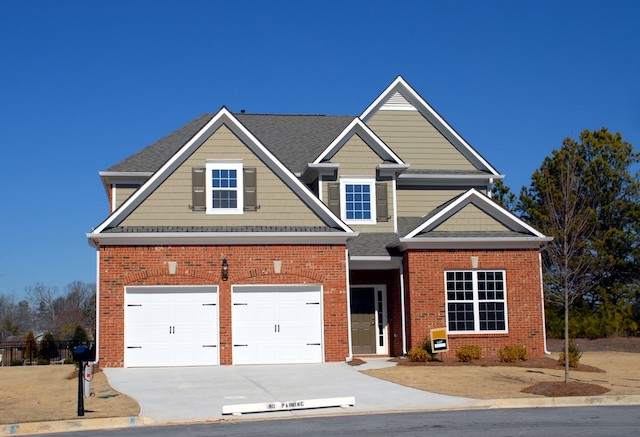The median home value of homes in the United States was $320,900 in 2022 while the median family income was $92,148 according to the 2022 American Community Survey. This means that the median home cost less than 3.5 times median family income, which is pretty affordable. Even at today’s relatively high interest rates, someone getting a mortgage that is 3.5 times their income should be able to pay it off in well under 30 years while paying less than 30 percent of their income on the mortgage.
Value-to-income ratios ranged from well over 10 in Los Angeles and several other California cities to under 1.5 in Decatur Illinois and several Illinois counties. The states with the least affordable housing are Hawaii and California followed by Washington and Oregon — all states with urban-growth boundaries and other rural land-use restrictions. The most affordable states are Indiana, Ohio, Kansas, Iowa, West Virginia, and Mississippi.
Of states I wouldn’t mind living in as a remote worker, Kentucky, Indiana, Minnesota, New Mexico, North Carolina, and Texas are all pretty affordable, and Georgia is more affordable than the national average but not by much. Other than New Mexico, Wyoming is the only affordable state in the West and is even more affordable if Jackson Hole is excluded.
Demographer Wendell Cox’s recent estimates of U.S. housing affordability found unaffordable housing in Dallas, Houston, and other Texas cities that have historically been quite affordable. In a post about housing issues, I noted that Cox’s home price data were based on real estate transactions while the Census Bureau numbers are based on a cross-section of all homes in a region.
Before the pandemic, median real estate transaction prices were only 2 or 3 percent higher than Census Bureau values, indicating that people buying homes represented a good cross-section of America. In 2021, median real estate sale prices were at least 20 percent higher than Census Bureau values. As the recent real estate boom is driven by people who have discovered they can work remotely, which means people of above-average incomes, price-to-income ratios based on real estate transactions overestimate the true value-to-income ratios.
The 2022 data from the Census Bureau confirm this. The data show that the value-to-income ratio was 3.9 for the city of Houston and 3.2 for the Houston urban area. These are a lot lower than the 4.7 in Cox’s paper.
The city with the highest value-to-income ratio was Lakewood, New Jersey. This is strange because the 2022 ACS reported median home values of $831,600, a 73 percent leap from the amount reported in 2021. Lakewood is on the New Jersey shore, so I can imagine it may have a lot of high-end vacation homes plus lower-valued homes for full-time residents, resulting in a skewed value-to-income ratio. But a 73 percent increase in prices in one year seems unlikely and Zillow’s median prices are a lot lower than the Census Bureau’s, so I suspect the ACS sample for Lakewood was too small.
The next 23 least-affordable cities were all in California, followed by New York City, followed by 11 more California cities. The 44th least-affordable city is the first one from an interior state, but surprisingly it is Provo, Utah, not Boulder, Colorado, which has previously been the most expensive interior city for many years.
The 15 least-affordable urban areas are all in California or Hawaii, followed by Flagstaff, another California region, Bend, Oregon, then six more California urban areas. Bend is notable for having drawn its urban-growth boundary when it had 17,000 residents, then not expanding it until it had more than 80,000. Today it has more than 100,000 but has made only one small expansion to its boundary.
At the other extreme, the most affordable cities and urban areas are mostly in the Midwest. However, if you are looking for a place to move that is affordable but also scenically and climatically attractive, Augusta, Georgia looks good with a value-to-income ratio of just 2.3 (though the Augusta urban area is a little higher at 2.7).
There are two little problems with the ACS data. The Census Bureau apparently didn’t think it was possible for median home values to be above $2 million or median family incomes to be above $250,000, so those were the highest numbers that could be recorded. For three California cities, the median home prices were above $2 million, so the ACS just said $2,000,000+. For one California and one Washington city the median family income was reported as $250,000+. I substituted Zillow values for the three California cities — I know they may be high but one of them was actually well below the ACS number of $2 million+ — and just used $250,000 for the family incomes. The resulting value-to-income ratios for these four cities are almost certainly wrong.
I’ve posted a spreadsheet showing median home values, median family incomes, and value-to-income ratios for every state and all counties, cities, and urban areas in the ACS data. (Places are excluded where the survey didn’t produce enough responses to make the data statistically sound.) The three cities with home values above $2 million are marked “Zillow” (one of them also had incomes above $250,000) and the other one with incomes above $250,000 is marked “Income est.”
The spreadsheet is sorted by type of geography (state, county, city, urban area), state, and within each state by value-to-income ratios, but you can resort it however you like. Since I am used to thinking of geographies as states, counties, cities, and urban areas, I assigned a type identifier to each of these so I can sort them in that order.









Especially true because Texas is a non-disclosure State.